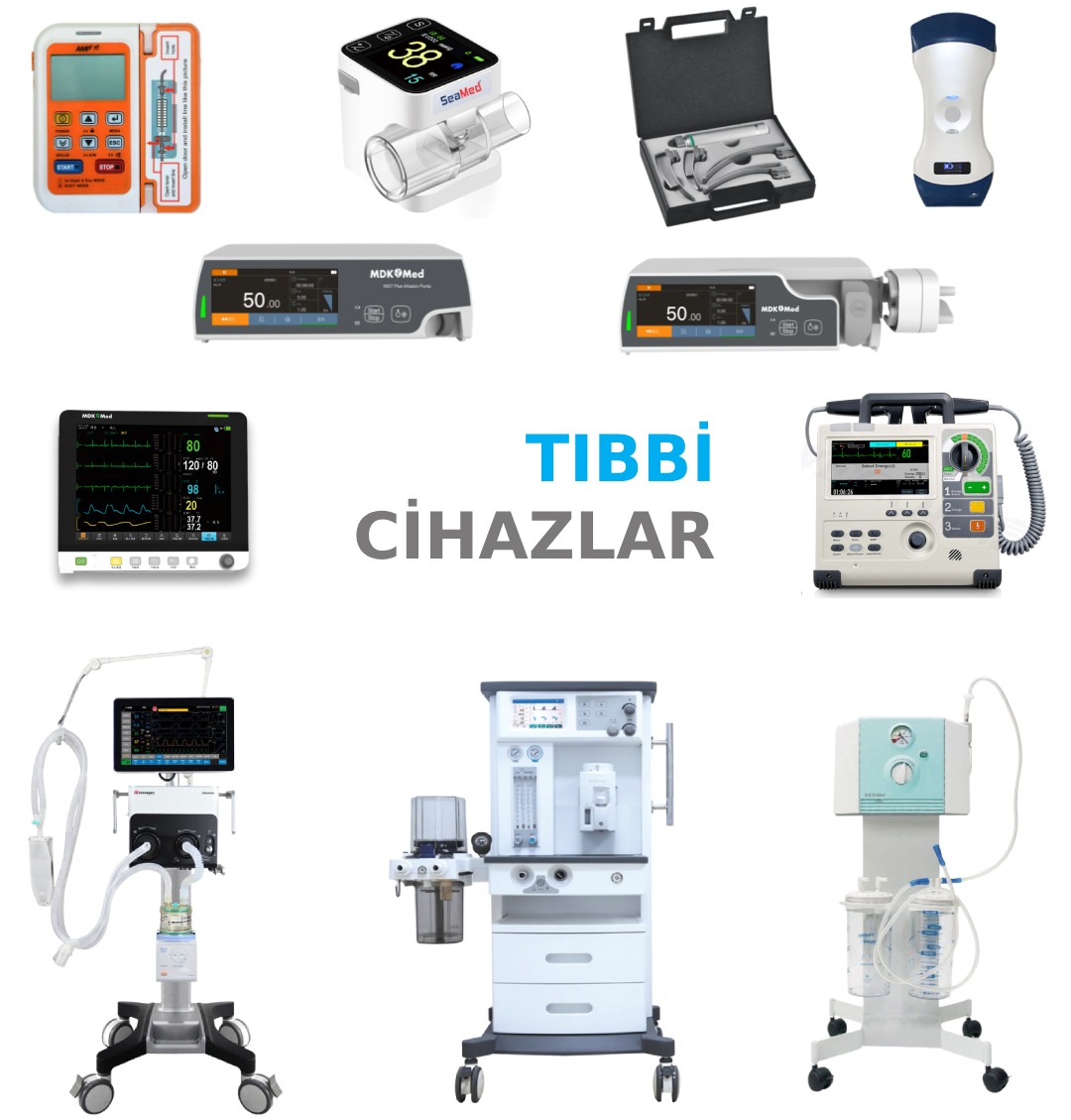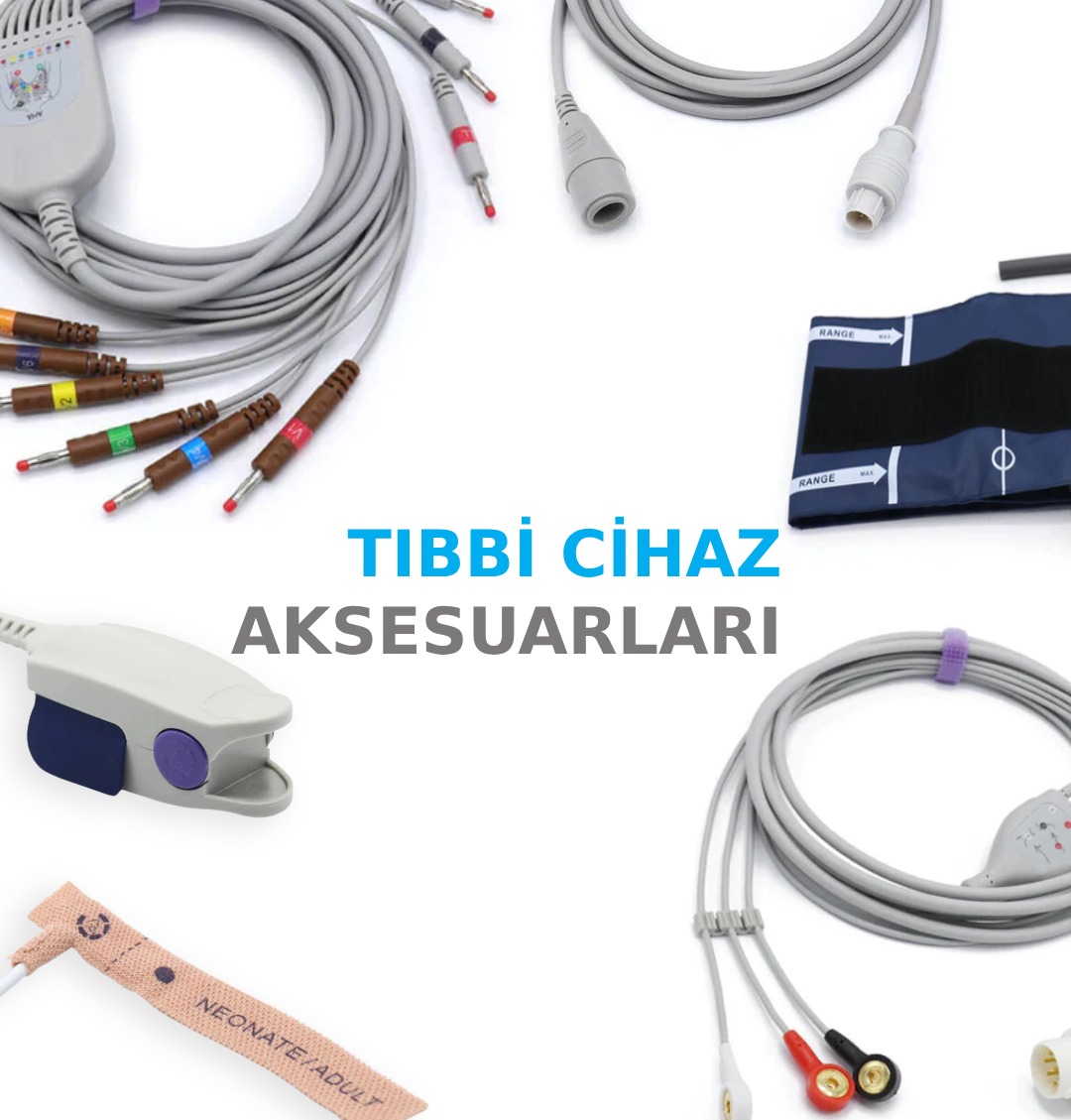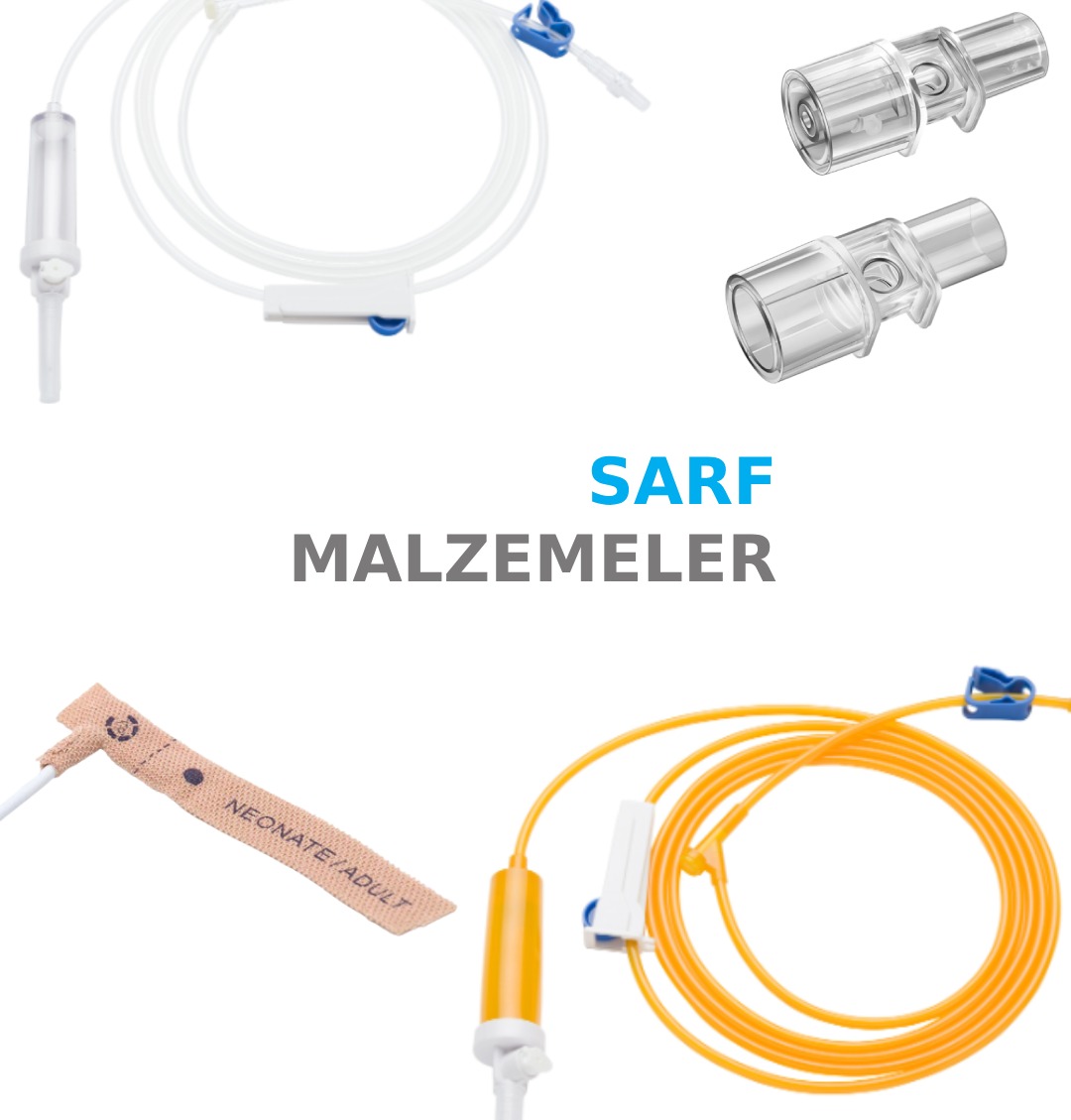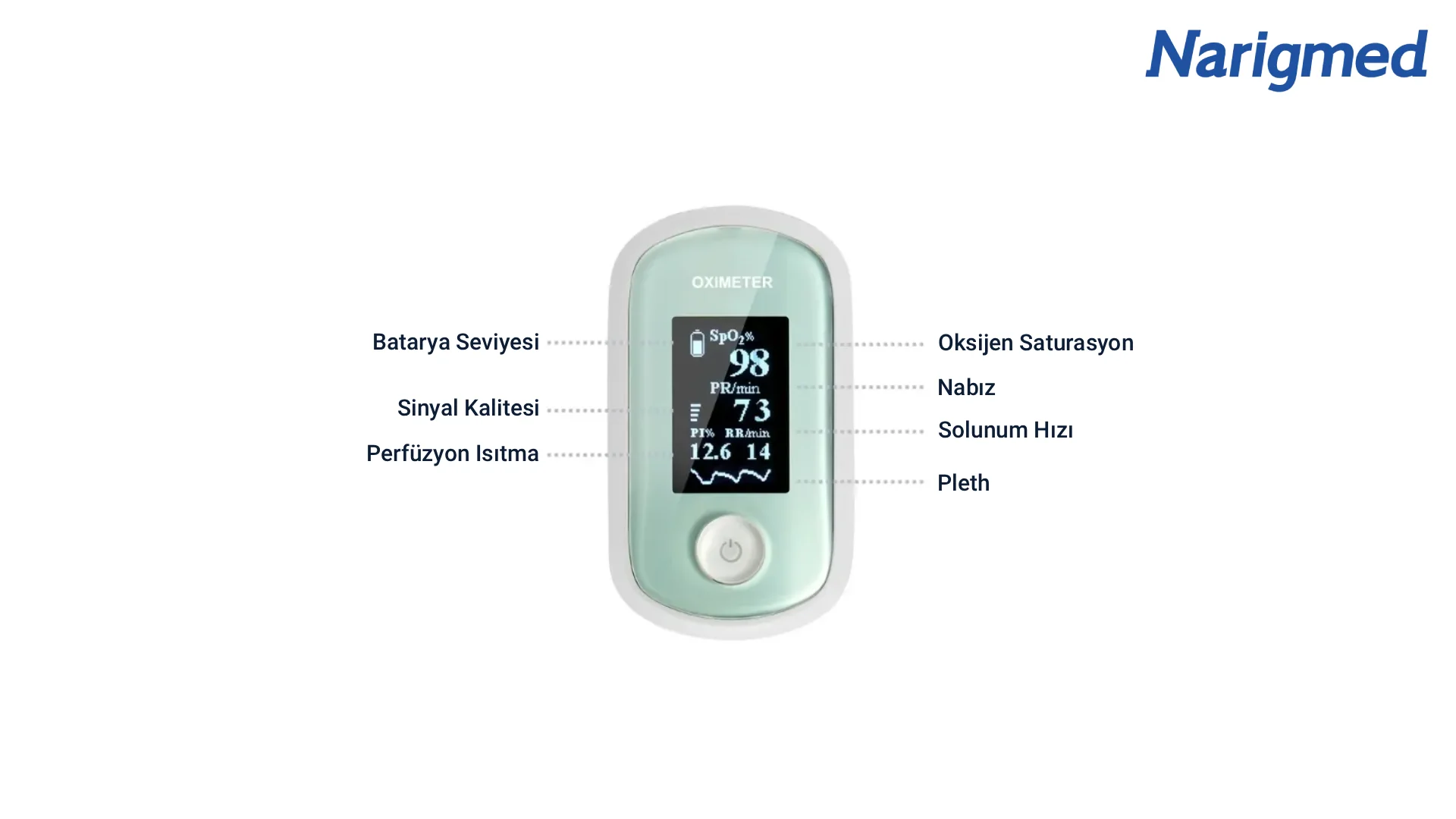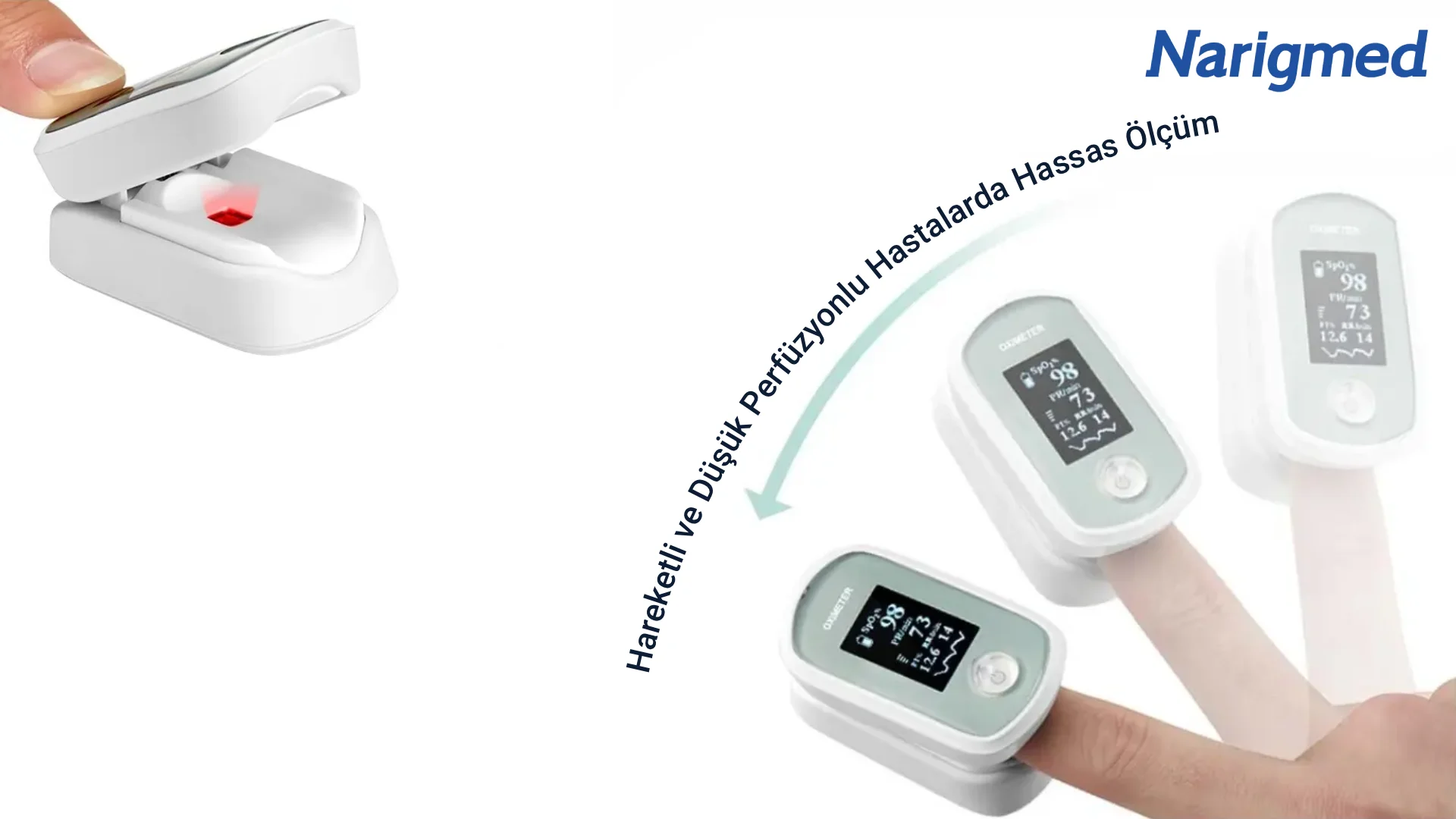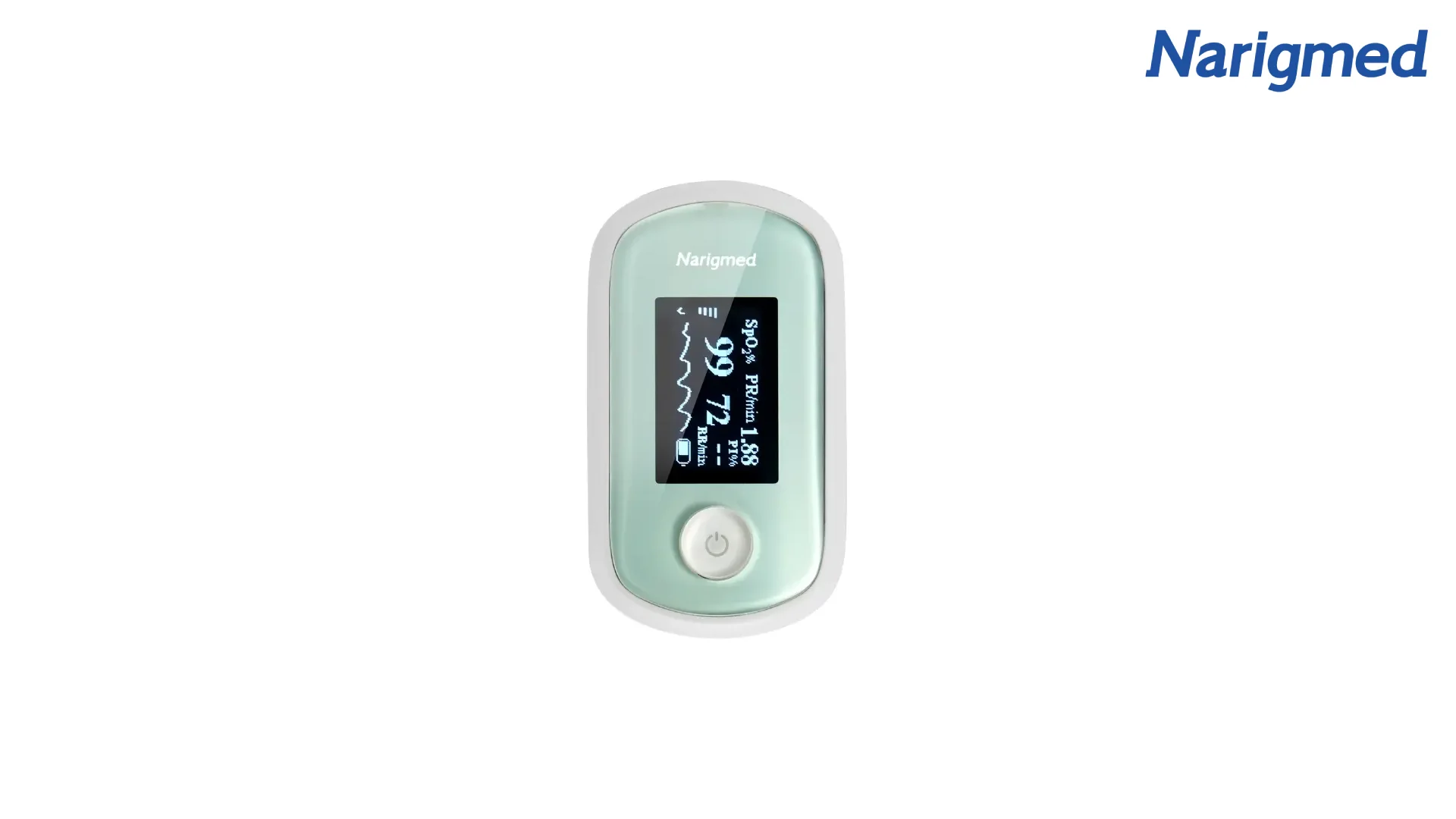
NARIGMED FRO-200 FINGERTIP PULSEOXIMETER
- SpO2 Measurement Range: 0~100%
- PR Measurement Range: 25~250 bpm
- IP22 Protection Level
- PR and SpO2 Trend Graph
- 4-Side Display
- Antibacterial and Soft Inner Silicone
- Long-Lasting Latch Mechanism
Pulse oximeters are among the most important devices widely used in the medical field. These devices allow patients to monitor and evaluate their oxygen levels by measuring their oxygen saturation (SpO2) and pulse rate. Pulse oximeters are used in many healthcare settings, including patient monitors, intensive care units, operating rooms, emergency rooms, and home care.
In principle, pulse oximeters consist of a light source and photosensors. The light source typically uses infrared and red light. This light is directed at an area applied to the patient's skin. The photosensors measure the amount of light reflected or absorbed. The passage of arterial blood through the tissue, along with the pulse rate, determines oxygenation status. This information is analyzed by the pulse oximeter and displayed on the screen as the SpO2 value and pulse rate.
Some technical terms related to pulse oximeters include:
SpO2 (Oxygen Saturation): This refers to the percentage of oxygen saturation in the blood. A normal SpO2 level is generally above 95%.
Pulse Rate: Measures heart rate and is expressed as beats per minute. Pulse rate reflects the rate of circulation in the body.
Perfusion Index (PI): Measures pulse strength and arterial blood flow. It is used to assess vascular health and tissue perfusion.
Pulse oximeters have a wide range of applications. They are widely used in situations such as monitoring patient vital signs (oxygen saturation and pulse rate), monitoring anesthesia during surgery, evaluating patients with respiratory failure, and ensuring appropriate oxygen therapy. They also help patients with respiratory problems such as sleep apnea, asthma, and COPD monitor their oxygen levels at home.
Pulse oximeters allow for rapid and non-invasive monitoring of patient oxygen levels. This allows for the early diagnosis of complications related to oxygen deficiency or respiratory problems and the appropriate management of these complications. However, there are certain factors to consider. For example, movement or low perfusion can affect pulse oximeter accuracy. Furthermore, pulse oximeters should not be used as a sole diagnostic tool and should be evaluated in conjunction with other clinical findings.
Pulse oximeters are available in different types and offer a variety of options depending on need. Handheld pulse oximeters are a preferred option due to their portability and ease of use. These types of pulse oximeters can be held in the hand and measure using a fingertip sensor. Handheld pulse oximeters allow healthcare professionals to quickly monitor oxygen levels and pulse rates while on the go or in emergency situations.
Console pulse oximeters are larger and are typically used in conjunction with a monitor or instrument console. These types of pulse oximeters are commonly used in environments such as hospitals, intensive care units, and operating rooms. Console pulse oximeters may have more advanced features and offer more comprehensive data recording and analysis. Additionally, some models may have larger and easier-to-read displays.
Handheld and console pulse oximeters are based on the same principle, measuring oxygen saturation and pulse rate. However, the preferred types may vary depending on the usage scenario and needs. Both types of pulse oximeters are valuable tools for monitoring and assessing patients' oxygen levels, providing crucial information to healthcare professionals.
In conclusion, pulse oximeters are valuable devices that provide crucial information to healthcare professionals by monitoring patients' oxygen saturation and pulse rate. These devices are indispensable tools for monitoring patients' respiratory function and managing oxygen therapy.

